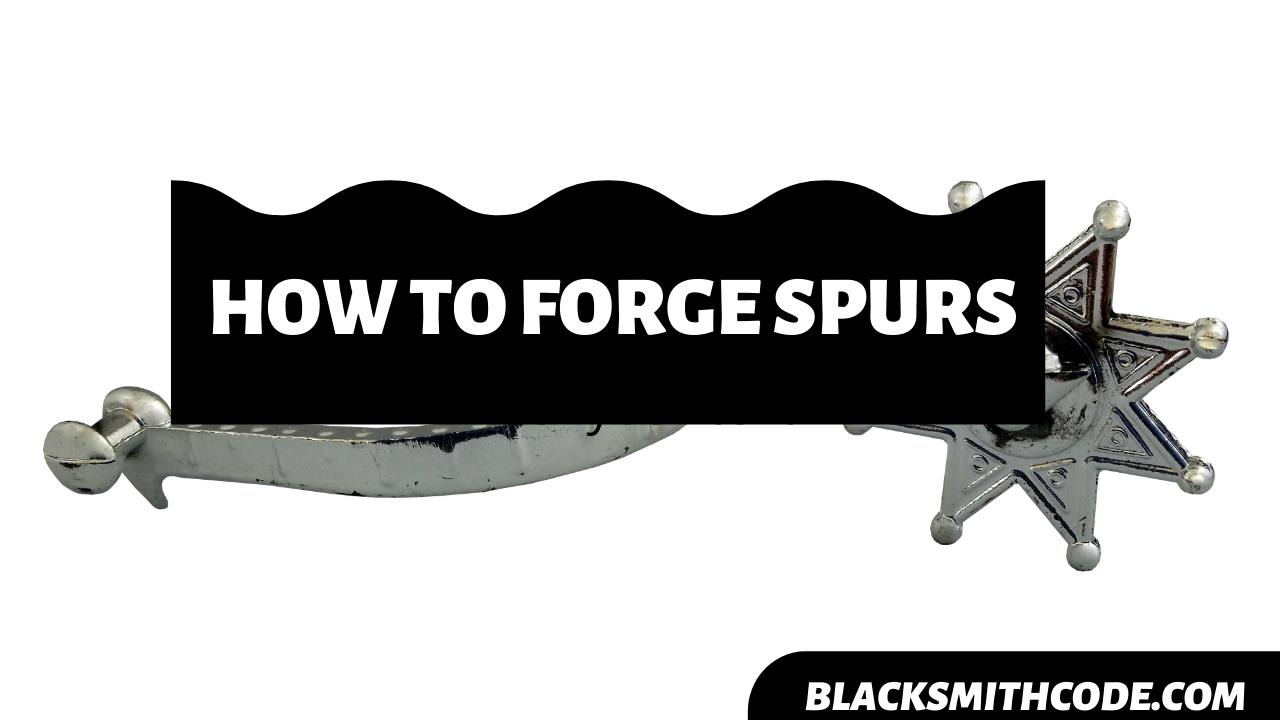Do you know spurs never get old? Despite the evolution of time, the modern-day blacksmiths still forge materials that some individuals consider primitive. Spurs are deemed to be one of such materials. Read on to find out how to forge spurs.
Spurs are materials that are usually worn over or attached to the footwear of riders. They are mostly used by ancient warriors and other horse riders. An individual who participates in horse races still uses spurs till date; thus, it is wrong to say that spurs’ use is completely outdated.
A spur works by directing horses to move in diverse directions, and it has two distinct parts. The outer projection of the spurs is called the shank, which is useful in prodding the horse. The other part which is called the heel band is where the rider’s boots rest on.
The iconic reputation of spurs makes it a valuable asset for blacksmiths that can forge it. You can also add the forging of spurs to your cabinet of blacksmithing skills. Although spurs are iconic, the forging process is one of the easiest things you can think about.
Understanding the steps involved and identifying the essential materials to use will make the project hassle-free for you. Below is a practical guide that can help you through the forging process of a spur.
Essentials
Before embarking on your forging process, it is crucial to know the essential tools and materials needed for the project’s success. These essentials include;
Forge
Instructions on How to Forge Spurs
Step 1: Get Your Tools and Materials
To ease the stress of forging any blacksmithing process, the best thing you can do to help yourself is getting your tools and materials ready in proximity. A block of steel of notable thickness is the most appropriate material for this process.
Thick steel might not be very suitable because of the drawing and rounding process involved in the project.
Step 2: Measure and Mark
The forging process of spurs needs accuracy when it comes to measurement and cutting. You have to measure out and mark the part of the steel that would form the shank.
Quick Steps
- Get the actual length of block-steel you want to use.
- Measure the middle of the block-steel and make a mark.
- Measure and mark equal distances on both sides of the center mark. This space you are marking out will form the shank of the spur while the other length will form the rounded part. Consequently, it is essential to be precise with your measurement.
Step 3: Cut Out Your Marks
One you are done with your measurement, use a suitable cutting tool to make a slight cut on the marked lines. This cut aims to help you identify where to cut and how to hammer the steel when it returns from the forge.
Step 4: Heating
Now, it is time to make use of your forge. Place the block-steel gently into the forge and heat it to a suitable temperature. Retrieve it from the forge with your tongs and place it on the anvil for cutting and hammering.
Step 5: Cutting and Hammering
This step is assumed to be the most rigorous of all the steps involved in forging spurs. It usually goes a long way in determining the final output of your project.
If you make your marks perfectly, you should be able to distinctly see the part that would form your shank from the rest of the materials.
Pro Steps
- Use a suitable technique to half the two sides of the block-steel, leaving your shank standing tall at the center. The halving is only essential if you are using block steel of enormous thickness.
- If your block is not too thick, you don’t need to halve it. Just hammer down the two sides until you can see your shank standing tall in the middle.
Step 6: Drawing
The drawing process involves the flattening of the sides and shank. This step aims to draw out the parallels that would be rounded, making it flat and giving it suitable breadth.
Quick Steps
- Continuously hammer-down the two sides of the shank until they become flat. Hammer in a way that you would be flattening and drawing the steel simultaneously.
- Once the two sides are of considerable flatness, then it’s time to deal with the shank.
- The shank should still be the actual thickness of the block-steel. Place it on the anvil and hammer down until it becomes flat and easy to handle.
It is essential to note that the shank should not be as flat on the other sides. Also, the arms should be flat enough for easy rounding. Also, you can reheat the steel as often as the need for it arises.
Step 7: Rounding
Now, it’s time to give the spur its curve shape. The process should not be difficult if you draw and flatten your steel properly
Quick Steps
- Return the steel into the forge and retrieve it when it reaches workable temperature.
- Use a suitable curving technique to curve it outward with two tips moving away from the shank and towards each other.
Step 8: Grinding and finishing
The grinding and finishing will help you to fine-tune the spur. You can be flexible with the finishing. Use any style that is comfortable for you to improve the final outlook of the project.
FAQs on How to Forge Spurs
Question
What are the uses of spurs?
Spurs are mostly used by horse riders to change the direction of the horse easily. It is also useful in prodding horses.
Question
Can I forge spurs from Damascus steel?
Of course, you can forge a spur with any steel as long as the material has enough strength to suit its use.
Question
Can I make spurs for sale?
Yes, people often make spurs for commercial purposes. If you have the right market, you can make a lot of money from forging and selling spurs.
Video
Warnings
The following precautions will help you get suitable results and guarantee your safety during the forging process.
- Ensure the use of gloves, apron, and other safety gear.
- Ensure proper ventilation in your workspace.
- Use grinders that are in good shape.
- Handle all hot steel with tongs to avoid burn.





